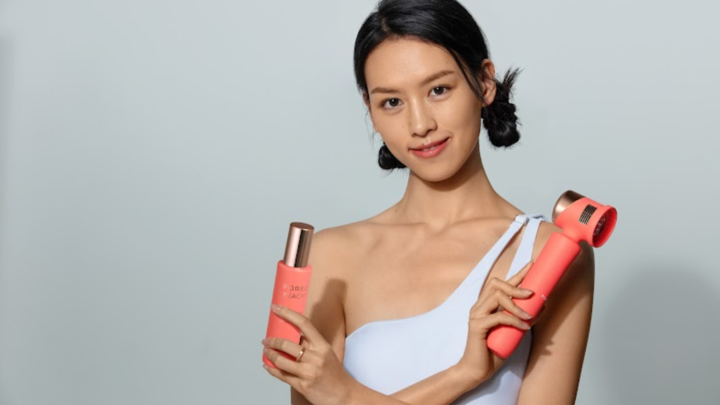7 min read
Aim to Please: Does Laser Hair Removal Hurt?

Where would every self-respecting Jedi be without his lightsaber? How would Dr. Evil, in his infinite malevolent genius, hold the world hostage; how would the Ghostbuster quartet contain the ectoplasmic manifestations terrorizing our world if it weren't for lasers? A rich source of cinematographic inspiration, an irreplaceable precision tool in anything from cutting thick metal to diamonds, all the way to extremely fine surgeries, mass spectrometers, communications, and your every day barcode scanners - lasers are here to stay.
Lasers have also entered the beauty industry, serving various functions in anti-aging and skin improvement, such as wrinkles, acne, scars, or removal of unwanted tattoos, and they also offer a long-term method of hair removal. It seems a bit fairytale-ish when you learn the benefits, but still, there is doubt creeping in every laser hair removal novice and the unsettling question of: Is laser hair removal painful? Most of us are not big fans of pain and would like to avoid it whenever possible. So, does it hurt? How bad, and where does it hurt the worst? But first, let's learn how lasers work before we start weighing if the pain is worth it.
What is a laser?
The word laser is an acronym for Light Amplification by Stimulated Emission of Radiation. Well, that's a mouthful. The light you see around you, be it the sun or a lightbulb in your room, comprises various wavelengths (colors) of light. Lasers are different because they contain only one wavelength where the peaks and valleys of the wave amplitude are aligned. This means that a lot of power and energy can be crammed into a really thin, bright beam of focused, precise light rather than dispersed as in a flashlight. Focusing makes all the difference (as you might have noticed through life so far).
Why does laser hair removal hurt, and how does it work?
Once a short pulse of light is directed onto the skin's surface, the follicle soaks it up in the form of heat to destroy the hair root bulb. This quick light-to-heat transformation is what actually hurts as energy reaches the hair root to destroy it. Temporarily heating the follicle to this unnatural temperature prevents further hair from growing from the follicle, and the existing hair will fall out.

You will need to repeat the treatment multiple times (usually 6-8 times every 5-8 weeks; talk to your skincare professional about what's right for you), as not all hair is in the same growth phase at the same time. How often and how many treatments you'll need will also depend on what body part(s) you're treating and your skin tone, hair color, and density. Most people with dark hair and light skin are not a big fan of this, but it makes you an excellent candidate for fast and effective laser hair removal. It also may hurt you a bit more.
How bad does laser hair removal hurt?
This largely depends on the area you're treating, as skin thickness and sensitivity vary wildly across the body. It will also depend on your pain threshold, the point in the cycle for women, and your general state of restedness, hydration, and satiety at the moment of treatment. But most people can tolerate the low to medium pain, akin to a rubber band snap, quite easily. You can always ask for some numbing cream if the area is very sensitive
What is the difference between laser and IPL hair removal?
Both laser and IPL hair removal work on the same principle by counting on the pigment melanin in the hair and heating it up to "destroy" the follicle and prevent it from producing new hair. Where they differ is the type of light used. IPL is a broadband pulsed light source that contains multiple light wavelengths but is stronger - like regular light on steroids. Laser, conversely, is a monochromatic coherent light source, as we've mentioned before, and is more precise than IPL. Both methods offer (almost) painless hair removal that, once done, can allow you to be free from hair for months or even years. Just imagine... years!

Getting a professional laser treatment is the most precise process, and very high energy focuses only on the hair follicle rather than the skin around it. These may give you the fastest results and may be appropriate for some darker skin tones (considering there is sufficient contrast between the hair and skin) that should otherwise be avoided when doing IPL. The energy and frequency of the laser or IPL hair removal and hair color are more important than choosing between a laser and IPL. If you go the IPL at-home road, choose a strong and safe one, such as the PEACH™ 2 or its PEACH™ 2 Max Pro counterpart with a clinically-sized treatment window.

How painful is laser hair removal by body region?
You can use laser hair removal on your entire body, excluding any body area directly near the orifice, such as the ear or nose—which are also very happy to harbor unwanted hair. The legs, arms, underarms, face, back, chest, and bikini line are all fair game, but not all have the same sensitivity, so your experience of pain may vary depending on the body area you wish to treat.
Legs
Oh, there are infinite shaving episodes and razors as far as the eye can see. If you were lucky, you got the barely visible, delicate hairs. If your genetic roulette didn't go as planned, you're basically walking around with a body stubble most days. Legs are a frequent choice for laser hair removal as they are usually perpetually exposed in the warmer months. The good news is that they are also one of the least painful areas due to their thicker skin. Still, you might feel less comfortable extending the treatment to the inner thighs.

Bikini Line
Not far from the underarm drama, the bikini line is one of the most painful places to get laser hair removal. Still, some people might be surprised that it is not as bad as the numbing cream-free underarm seanse.
Torzo
The stomach and chest are surprisingly non-painful, but once you turn your back on the laser hair removal device, you're in the danger zone. Many people report that the back was quite uncomfortable. That's not strange when you think about how good light backtracing feels.
Face
The face has a sort of a mid-range pain sensitivity but varies to high sensitivity in some areas with especially delicate skin. Cheeks and forehead are usually quite well tolerated without any excessive pain, while the upper lip can be a challenge to some due to the vicinity of very sensitive skin on the lips that has a lot of nerve endings. The chin and jawline are usually the middle ground.

Arms and Underarms
Laser hair removal on the arms, especially the forearms, is a breeze and will not cause any excessive discomfort. However, the underarms are a whole other story, and they may be very uncomfortable for people. If you're considering doing your underarms, it would be a good idea to think about a bit of numbing cream here.
Does laser hurt less the second time?
Regarding the fact that you will need to repeat the treatments, this question sits in the room like a hairless 600-pound gorilla: Does laser hurt less the second time? Yes, it will hurt less the next time because some of the hair follicles will have already been destroyed, so there is no melanin there to channel the heat to the hair root, and the existing hairs are already finer and thinner.
Laser hair removal prep to minimize pain
Painless hair removal is always the goal, but although the laser does not provide completely pain-free hair removal, you can work with your biology and follow instructions to get the most comfortable treatment possible.
Ideally, schedule your appointment around ovulation time and avoid getting zapped while on your period, as we're more sensitive to pain at this time. The least sensitive time is two weeks after the period. If you have a nick, cut, or bruise on the area you're supposed to have laser treatment on, reschedule or avoid that area. Laser hair removal prefers you to have a little stubble of hair sticking above the skin surface. Shaving a day or two before as a little stub of hair over the skin will help, but not too much.

No bronzers, selftanners, solariums, or fresh sun kissed skin. Stay hydrated, don't skimp on sleep, and eat a nutritious meal that day, aka be happy and calm; this will increase your pain tolerance. And those horrible people who told you you shouldn't have coffee on the day of the laser treatment can shut their perpetually sleepy mouths. For women especially, coffee helps manage pain tolerance levels.
During laser hair removal
Choose a provider that operates laser hair removal machines with in-built cooling functions like air or cooling surfaces. This also applies to choosing your at-home IPL hair removal device because it will make aaalll the difference in the world. If your pain tolerance is usually quite low, it is a good idea to take an over-the-counter painkiller. Ibuprofen should do the job nicely. Take it about half an hour to 45 minutes before your treatment for maximum effect. If you're on some medication already, skip this step or speak with your doctor if you can use an OTC painkiller.
Laser hair removal post-care
You'll be fine. Some pain and tenderness are normal, and they will not last long—just a few hours. Any swelling or itchiness will be gone in a day or two. For these couple of days, avoid superheating the skin, such as with saunas, jacuzzis, or direct sun exposure. An ice pack would be a good idea to soothe redness, and people with extremely sensitive skin are the only ones who may feel the need to soothe irritation with a cortisone cream.








Leave a comment